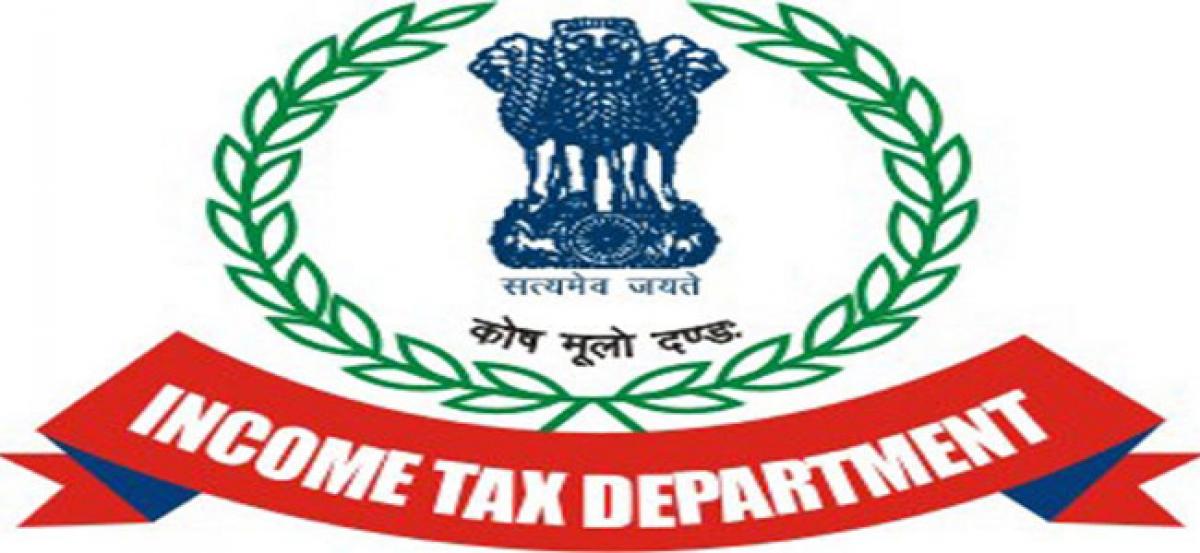Live
- BJP MP candidate Bharat Prasad visited the student who tried to commit suicide
- PM’s popularity in the fast lane: Autos with 'Har Dil Mein Modi' slogan spotted across Delhi
- Delhi-based political parties are like East India Company: Sukhbir Badal
- Golf: Diksha moves into Top-20 at South African Women’s Open
- KCR lashes out against BJP and Congress for destroying Telangana
- Dairy Science students visited the Milk cooling plant
- Moody feels Pant ahead in keepers’ race for T20 WC squad; Srikkanth picks Rahul over Samson as reserve keeper
- Thanking voters for extending 'unparalleled support' to NDA, PM Modi says second phase 'too good'
- Natural Relief for Menstrual Cramps: Beetroot Juice Recipe
- Asha Worker died in a road accident
Just In

Major concerns shadow the Indian economy. The Central Statics Organisation figures speak of both low inflation and industrial growth. The RBI is skeptical and is keen on maintaining, if not raising interest rates. And, the International Monetary Fund (IMF) says the economy may slow down.
Major concerns shadow the Indian economy. The Central Statics Organisation figures speak of both low inflation and industrial growth. The RBI is skeptical and is keen on maintaining, if not raising interest rates. And, the International Monetary Fund (IMF) says the economy may slow down.
The RBI’s June data on loan off take from 41 scheduled commercial banks states that non-bank food credit increased by 4.5 percent in April 2017 as compared with an increase of 8.4 percent in April 2016. Credit to agriculture and allied services increased by 7.4 percent against 1.3 percent a year back.
The credit to industry contracted 1.4 percent in comparison with a token increase of 0.1 percent in April 2016. The demand for credit in almost all the major sectors – infrastructure, food processing, metal, metal products and textiles slumped.
Further, the services sector also availed less credit. Till April, 2017, it increased by 4.1 percent against 10.9 percent a year back. This is a clear indication of the impact not only of the domestic market but also the global situation post hardening postures of US President Donald Trump.
The credit demand rise was witnessed in petroleum, coal products, nuclear fuels, rubber, plastic products, vehicles and gems and jewellery. The trend denotes reduced activities in all major sectors.
In fact, the investment in gems and jewellery is an indication that many people are turning their money into gold-related assets marking a sense of uncertainty among the slightly affluent. This trend possibly reflects that money is moving away from banks, owing to interest rate uncertainties.
Undeniably, the way the banks are cutting interest rates on deposits has caused concern among large number of depositors, including senior citizens, women and marginal earners. Their savings are getting eroded on two counts – cut in interest rates as also income tax on savings, obviously suppressing demand. This kind of situation leads to a mindset that drives people away from the market.
They may be having the purchasing power but prefer to save rather than spend. The state of affairs calls for a drastic change in approach to entice people to the market. Even some of the large retail chains recently closed down their units in many parts of the country as the demand slump led to fewer footfalls. Clearly, the market needs to be unbundled and so also the purse strings.
It is indeed surprising that the Seventh Pay Commission hike for government employees has not seen the kind of demand rise that was expected. At such a time of global uncertainty, reducing interest rates is not going to help. The severe income-tax on savings’ interests is making things more difficult. As is well known, the change in market activity has its impact on jobs too.
The last major job growth was in 2009. A look at the real estate sector too shows dismay. Indian statistics has never been questioned. For the first time, the IMF says that the National (Indian) Accounts Statistics would have understated the economic impact in near term in its May 2017 regional economic outlook for Asia and the Pacific.
The RBI at least cannot be blamed for the slowdown of the Indian economy. However, the situation calls for a hard relook at the entire economy. There is need for drastic reduction or even elimination of I-T to give the demand a boost. Much of the demand crunch is due to the heavy taxation on low or at least not so high average income of Indians. It is time to study the linkages between taxing people and growth. (INFA)
By Shivaji Sarkar

© 2024 Hyderabad Media House Limited/The Hans India. All rights reserved. Powered by hocalwire.com







